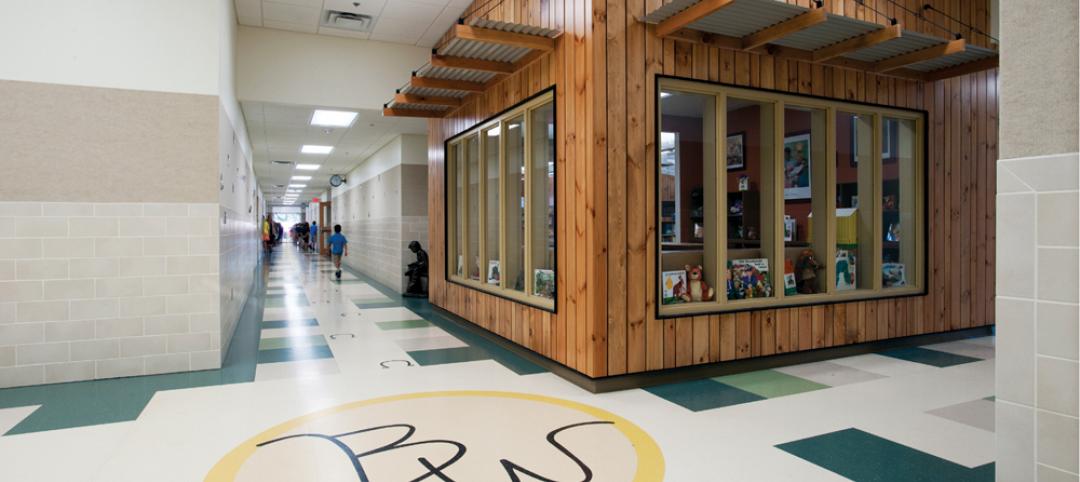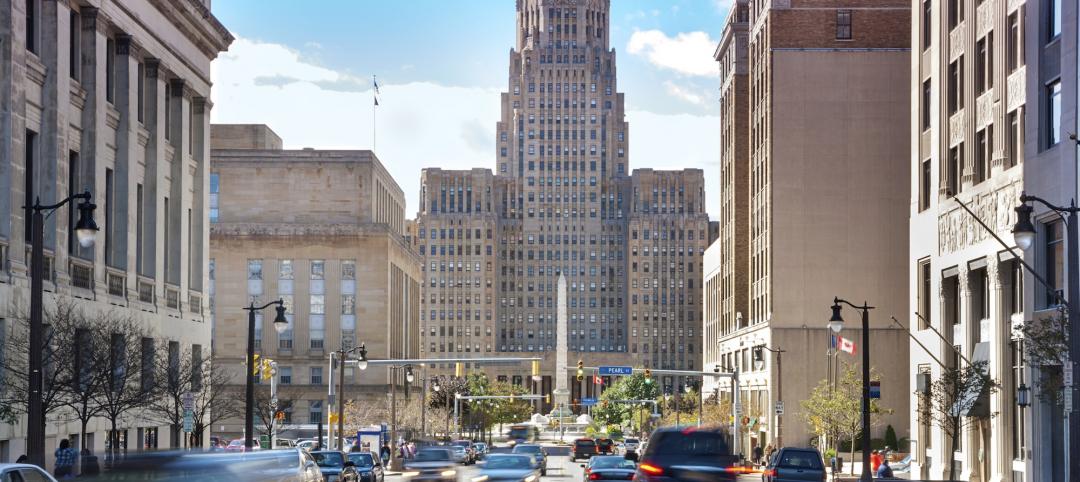
After more than a century without a substantial renovation, Old Suffolk County Courthouse, designed in Neo-Classical style by Boston's first city architect, George Clough, was overdue for a facelift.
 |
| Smothered by decades of coal dust, smoke, and pollutants, the ornate, gilded ceiling of the Great Hall at Boston’s Old Suffolk County Courthouse was carefully restored in a $117 million renovation. The courthouse was renamed John Adams Courthouse following the 43-month project. PHOTO: JONATHAN HILLYER PHOTOGRAPHY |
Enter the makeover team: Boston-based architects Childs, Bertman, Tseckares and general contractors Suffolk Construction/NER Construction Management. Their patient: a courthouse built between 1886 and 1894 and nowhere close to being ADA-compliant, too small to handle the needs of the Massachusetts High Courts, and sporting woefully out-of-date electrical, HVAC, and communications systems.
The team's efforts focused heavily on preservation and restoration because the courthouse was listed on the state and national historic registers, which meant that simple matters had to be addressed in smarter ways. After more than 100 years, its space needs had changed, not only for its judicial function, but also to accommodate security systems and automobile parking. Ordinarily, the solution would have been to loosen the girdle and letting the building expand. But here, the team had to find a way to add square feet within the parameters of the courthouse's original footprint—effectively plumping up the building while still managing to fit it into last season's pants.
To accomplish that goal, the Building Team headed for the light wells. Outdated since the advent of modern lighting systems, parts of the courthouse's two largest wells were converted into 50,000 square feet of usable space for the Massachusetts Supreme Judicial Court and the state Social Law Library.
Meanwhile, new underground parking was inserted into the building's lowest level, giving the state's highest judicial members direct access from their cars to their chambers. The team also moved most major court functions to the second and third floors and reorganized the entry level to celebrate the Great Hall, a soaring four-story public space.
The Great Hall was also a major focus of the team's renovation efforts. Architectural details that were smothered by decades of coal dust, smoke, and pollutants were cleaned inch by inch, as was the decorative ceiling with its intricate, gilded floral abstract pattern bordered by arches and columns decorated with rosettes, egg and dart borders, and classical figures cast in plaster. Damaged areas were infill-painted using reversible materials, saving as much of the original art as possible.
Courtrooms were also heavily renovated. Drop ceilings from the 1960s were removed to reveal original plaster moldings. For the wall and woodwork restoration, the team turned to old photographs that documented original vibrant paint schemes, Victorian stencil work, and light-colored, lustrous wood finish. Modern, efficient versions of historic lamps and lighting fixtures completed the transformation.
When the dust settled and the nipping and tucking was finished, the now-344,285-sf courthouse was so transformed that officials decided it needed a new name. The Old Suffolk County Courthouse was reborn as the John Adams Courthouse.
Related Stories
| Jul 18, 2014
Top Architecture Firms [2014 Giants 300 Report]
Gensler, Perkins+Will, NBBJ top Building Design+Construction's 2014 ranking of the largest architecture firms in the United States.
| Jul 18, 2014
2014 Giants 300 Report
Building Design+Construction magazine's annual ranking the nation's largest architecture, engineering, and construction firms in the U.S.
| Jul 7, 2014
7 emerging design trends in brick buildings
From wild architectural shapes to unique color blends and pattern arrangements, these projects demonstrate the design possibilities of brick.
| Jul 2, 2014
Emerging trends in commercial flooring
Rectangular tiles, digital graphic applications, the resurgence of terrazzo, and product transparency headline today’s commercial flooring trends.
| Jun 30, 2014
Research finds continued growth of design-build throughout United States
New research findings indicate that for the first time more than half of projects above $10 million are being completed through design-build project delivery.
| Jun 18, 2014
Arup uses 3D printing to fabricate one-of-a-kind structural steel components
The firm's research shows that 3D printing has the potential to reduce costs, cut waste, and slash the carbon footprint of the construction sector.
| Jun 12, 2014
Austrian university develops 'inflatable' concrete dome method
Constructing a concrete dome is a costly process, but this may change soon. A team from the Vienna University of Technology has developed a method that allows concrete domes to form with the use of air and steel cables instead of expensive, timber supporting structures.
| Jun 9, 2014
Green Building Initiative launches Green Globes for Sustainable Interiors program
The new program focuses exclusively on the sustainable design and construction of interior spaces in nonresidential buildings and can be pursued by both building owners and individual lessees of commercial spaces.
Smart Buildings | Jun 8, 2014
Big Data: How one city took control of its facility assets with data
Over the past few years, Buffalo has developed a cutting-edge facility management program to ensure it's utilizing its facilities and operations as efficiently, effectively, and sustainably as possible.
| May 29, 2014
7 cost-effective ways to make U.S. infrastructure more resilient
Moving critical elements to higher ground and designing for longer lifespans are just some of the ways cities and governments can make infrastructure more resilient to natural disasters and climate change, writes Richard Cavallaro, President of Skanska USA Civil.















